Although I am largely a proponent of trying to learn the banjo as much as you can using your ear, there are times when tablature is extremely useful. If you want to learn how to read banjo tab you can read another article of ours here that explains this here. This article is telling you why you should be writing your own banjo tab.
Whether you are writing your own licks or transcribing someone else's, writing your own banjo tab has a number of strong benefits for your playing, and will actually force you to use your ear more.
1. Rhythmic Improvements
When writing down music, you are forced to understand what rhythm is happening. Getting this really locked in will help your playing more than you expect. The most important part of music is rhythm. Really knowing what beat each note is played on and where the rests are will help to crystalize your playing.
2. Ear training
When transcribing music, your ear will strengthen by leaps and bounds. To write this down will force your brain to fully conceptualize what is happening in what you hear. Even if you are transcribing yourself, you will be forced to slow down and truly listen to each note that you play.
3. Building a collection of your licks
You might sit down with your banjo and come up with different licks, but how many of these do you remember? By writing down the licks that you come up with, you have a library of licks that you can go back to again and again. Write out the chord that these licks should be played over and build a collection of licks that you can use for different chord changes.
Today there are a lot of options when it comes to writing tab digitally. There is software for your computer, and apps that run on a tablet/phone. But if you are tentative to download or learn another piece of software/app, don't fret, good ole pencil and paper still works extremely well. If writing with pencil and paper, using music staff paper works very well for 5 string banjo tab, as it features 5 horizontal lines which would represent the 5 strings. Don't have music staff paper or you want to write tab for a 4 string or 6 string banjo? Then notebook paper works well. Just trace the lines (4 for a 4 string, 5 for a 5 string and so on) or use a ruler to draw the horizontal lines.
MuseScore
MuseScore is a well known and inexpensive piece of software for writing music notation that also has a good tab writer that works for all styles of banjo. This is easy to use and easy to learn. If you ever have a question on what to do something, simply Google your question and you are bound to find the answer. This is increasingly becoming the go to piece of software for writing banjo tab.
TablEdit
TablEdit has been the go to piece of software for writing banjo tab for a long time. While its look and feel has the feel of a piece of software from the '90s.. it does work well and can be used for banjos with all numbers of strings.
Sibelius
Sibelius is the leader in professional music notation software and is extremely powerful. It features the ability to write tab for stringed instruments as well.
Whichever method you choose for writing the tab, the way it is written is consistent. The horizontal lines represent strings - the bottom one being the 5th string (on a 5-string banjo - it'd be the 4th string on a 4 string banjo, etc). The top line is the 1st string. Numbers are placed on the strings to represent the fret that is played. A zero (0) signifies an open string (one that is not fretted).
You do want to show the rhythm for each note. This is where understanding a bit of how to read musical notation can really help. Find out how to read musical notation rhythms in the video below.
In 5-string banjo, because there are lots of variations of picking styles, you would want to write down which finger on the picking hand is playing. In 3-finger style on a 5-string banjo you would use a T below the note to notate that the thumb is to be used on the picking hand, and I if the index finger is to be used, and a M if the middle finger is to be used.
Fretting hand techniqes such as slides, hammer ons, pull offs, bends, etc should be notated as well.
Slides - notated with a straight line connecting the two notes on the same string and an SL written above the line
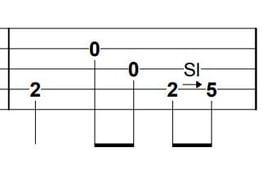
Pull Offs - an arched line connecting the two notes on the same string with a P or PO written above the arched line
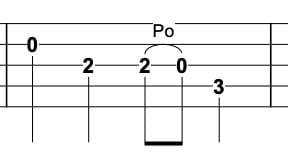
Hammer Ons - an arched line connecting the two notes on the same string with an H written above the arched line
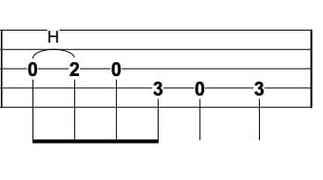
Bend (choke) - usually noted with a curved line up and sometimes a B or C (choke - what bends are often referred to in the 5-string banjo world) written. More specific tab notates how far up to bend with a 1/4, 1/2, or 1 marking. 1/4 to signify a quarter tone pitch bend up (halfway up to the next chromatic note), 1/2 to signify a half step tone to bend up to (the next chromatic note - ex. a G note bent up to an Ab note), and 1 to signify a whole step up (ex. a G note bent up to an A note).
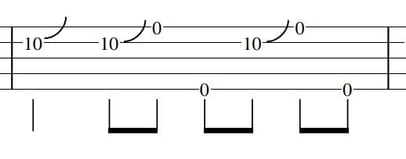
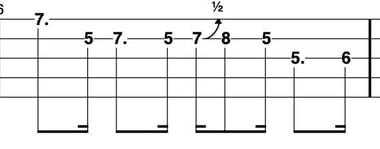
Let us know in the comments what method you prefer to use for writing banjo tab and why!
3733 Kenora Dr.
Spring Valley, CA 91977
COMMENTS